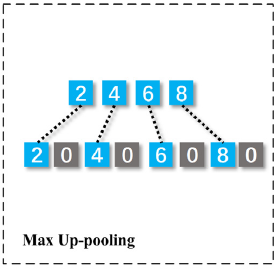Tried this, but the model doesn’t seem to converge. It’s giving the same loss after every epoch.
class SCAE(nn.Module):
def __init__(self):
super().__init__()
# Encoding block:
self.conv1 = nn.Conv1d(in_channels = 1, out_channels = 2, kernel_size = 1)
self.conv2 = nn.Conv1d(in_channels = 2, out_channels = 16, kernel_size = 16)
self.conv3 = nn.Conv1d(in_channels = 16, out_channels = 4, kernel_size = 32)
self.conv4 = nn.Conv1d(in_channels = 4, out_channels = 8, kernel_size = 64)
self.conv5 = nn.Conv1d(in_channels = 8, out_channels = 4, kernel_size = 64)
self.maxpool = nn.MaxPool1d(kernel_size = 2)
self.conv6 = nn.Conv1d(in_channels = 4, out_channels = 2, kernel_size = 64)
self.batchnorm1d = nn.BatchNorm1d(num_features = 2)
self.conv7 = nn.Conv1d(in_channels = 2, out_channels = 1, kernel_size = 1)
# Decoding block:
self.convT1 = nn.ConvTranspose1d(in_channels = 1, out_channels = 2, kernel_size = 1)
self.convT2 = nn.ConvTranspose1d(in_channels = 2, out_channels = 4, kernel_size = 64)
self.convT3 = nn.ConvTranspose1d(in_channels = 4, out_channels = 8, kernel_size = 64)
self.convT4 = nn.ConvTranspose1d(in_channels = 8, out_channels = 4, kernel_size = 64)
self.convT5 = nn.ConvTranspose1d(in_channels = 4, out_channels = 2, kernel_size = 32)
self.convT6 = nn.ConvTranspose1d(in_channels = 2, out_channels = 2, kernel_size = 16)
self.convT7 = nn.ConvTranspose1d(in_channels = 2, out_channels = 1, kernel_size = 1)
def maxUpPool(self, inpTensor):
up_sampled = torch.repeat_interleave(inpTensor,2, dim = 2)
up_sampled.index_fill_(2, torch.arange(1, y.size()[2], 2), 0)
return up_sampled
def forward(self, x):
# Encoding:
enc = torch.tanh(self.conv1(x))
enc = torch.tanh(self.conv2(enc))
enc = torch.tanh(self.conv3(enc))
enc = torch.tanh(self.conv4(enc))
enc = torch.tanh(self.conv5(enc))
enc = self.maxpool(enc)
# print(enc.shape)
enc = F.tanh(self.conv6(enc))
enc = F.tanh(self.conv7(enc))
# Decoding:
dec = torch.tanh(self.convT1(enc))
dec = torch.tanh(self.convT2(dec))
dec = self.maxUpPool(dec)
dec = torch.tanh(self.convT3(dec))
dec = torch.tanh(self.convT4(dec))
dec = torch.tanh(self.convT5(dec))
dec = torch.tanh(self.convT6(dec))
dec = torch.tanh(self.convT7(dec))
return dec.view(-1, 300)
Is this the right way to use your suggested approach ?
EDIT: There was some problem in my training loop. Both the approaches are yielding similar results. The autograd engine is able to keep tracking history with slicing.
